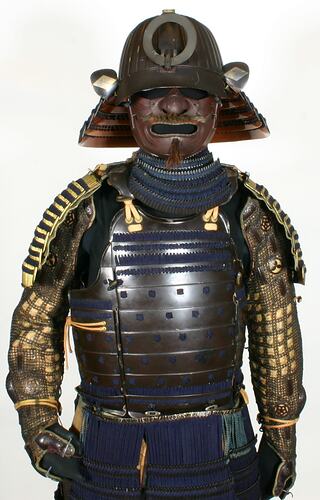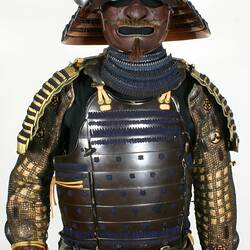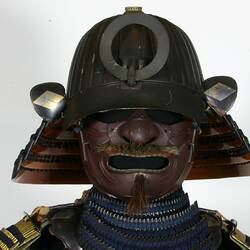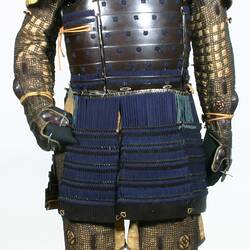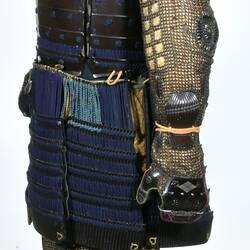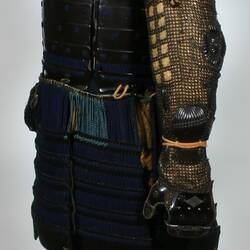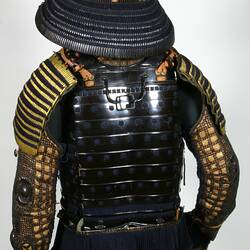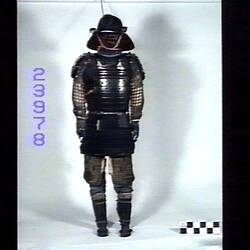Summary
Suit of Japanese armour from the Edo period, 1603-1867. Comprises of helmet, half-mask, thigh armour, cuirass and shoulder guards, and shin guards. Belt missing.
The Edo period (Edo is the ancient name for Tokyo) is considered the beginning of the early modern period of Japan. During this peaceful period, although fighting equipment was no longer needed, provincial governors were regularly required to attend the Shogun's court. The samurai's interest in fine armour arose from their desire to appear with as much prestige and status as they could on their way to and from court. Armour became a showcase for the arts of many types of metalworkers, embroiderers and weavers.
The suit of armour was previously in the collection of the National Gallery of Victoria. It appears to be one of two that the National Gallery received in 1878 from L.H. Hart for a sum of 20 pounds.
Physical Description
Comprises of helmet, half-mask, thigh armour, cuirass and shoulder guards, and shin guards.
More Information
-
Collecting Areas
-
Acquisition Information
Transfer from National Gallery of Victoria (NGV), 12 Sep 1955
-
Place & Date Made
-
Classification
-
Category
-
Discipline
-
Type of item
-
References
Research on history of armour by Gareth Knapman (Thomas Ramsay Scholar 2010).
-
Keywords
